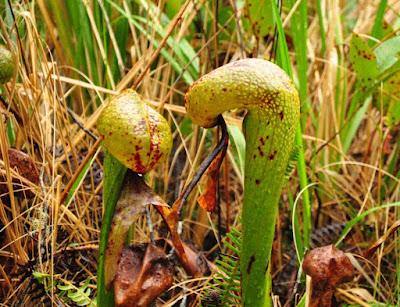
Cobra Lilies (Darlingtonia californica) at the Darlingtonia Wayside, Oregon
My friend Caroline Hatton, a frequent contributor to this blog, dared friends and family to enter a bog crammed with carnivorous plants in May 2022. She took the photosin this post and lived to share them.
One of the Oregon natural wonders I had read about ranked as the weirdest in my view. So I planned a creepy encounter with it. One gloomy, rainy day, while driving down the Pacific Coast with husband and friends, I dragged them all to the DarlingtoniaWayside, an Oregon State Natural Site where carnivorous plants lurk in a dark, dank bog.
Plants that eat animals? In some Hollywood movies, green vines shoot across the screen, whipping about until they coil around an unlucky human to gobble down in one slurp, while adventure mates desperately attempt frantic rescues. In reality, carnivorous plants merely trap and digest insects.
The Cobra Lily (Darlingtonia californica), so named because it looks like a snake out to kill you, is one such plant. Native to Southwestern Oregon and Northern California bogs, it is also known as Cobra Orchid or Pitcher Plant.
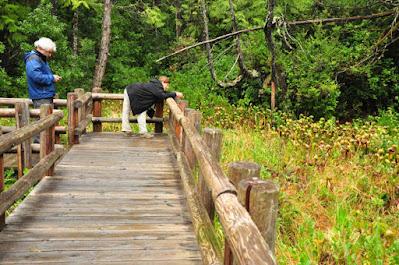
The boardwalk
Cobra Lilies are rare, but easy to see at the Darlingtonia Wayside where they are protected. The site is located on Highway 101, roughly 3 miles north of the town of Florence, halfway down Oregon’s Pacific Coast. From the parking lot, a paved trail leads to a boardwalk over the bog.
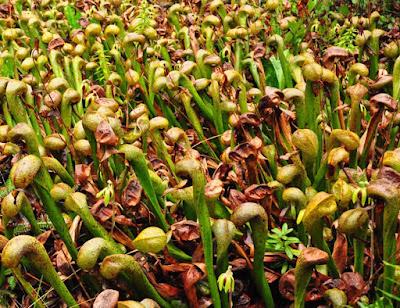
Knee-high Cobra Lilies
I had seen other carnivorous plants before, hard to spot, so small and delicate, that’s why they deserved protection, some kept practically as pets in kids’ bedrooms. But as I stepped on the boardwalk, the sight of thousands of stout, knee-high plants with a top part as big as my fist, made me feel queasy.
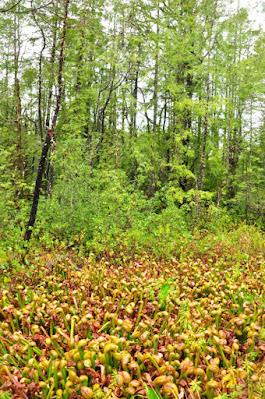
Cobra Lilies crammed in a bog
It didn’t help that the mud pond they crowded looked like a giant snake pit.

Cobra Lily anatomy
An info board detailed the plant parts and sickening feeding habit.
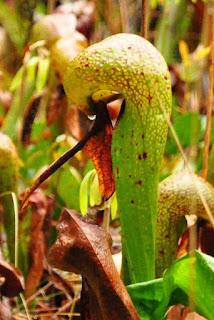
An insect lured by the nectar on the snake-tongue-like appendage enters the leaf hood from below. Transparent spots on the hood let light through, looking like exits, which they are not. The confused insect ends up in the vertical leaf tube, sliding down to where sharp hairs, pointing down, prevent escape. The insect falls into the liquid inside the bottom of the leaf tube, where digestive enzymes turn it into soup that the plant absorbs through its inner wall.
Slurp.
Despite being a bit grossed out, I couldn’t stop taking photos. And my friend, feeling “so excited,” declared this site to be “out of this world.” Who needs space tourism when such a quick and easy trip to an alien universe is free?
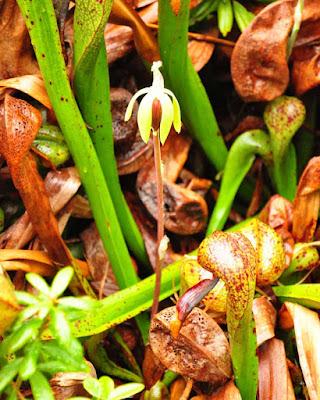
The Cobra Lily blooms in May or June.
All text and photos, copyright Caroline Arnold. www.theintrepidtourist.blogspot.com
